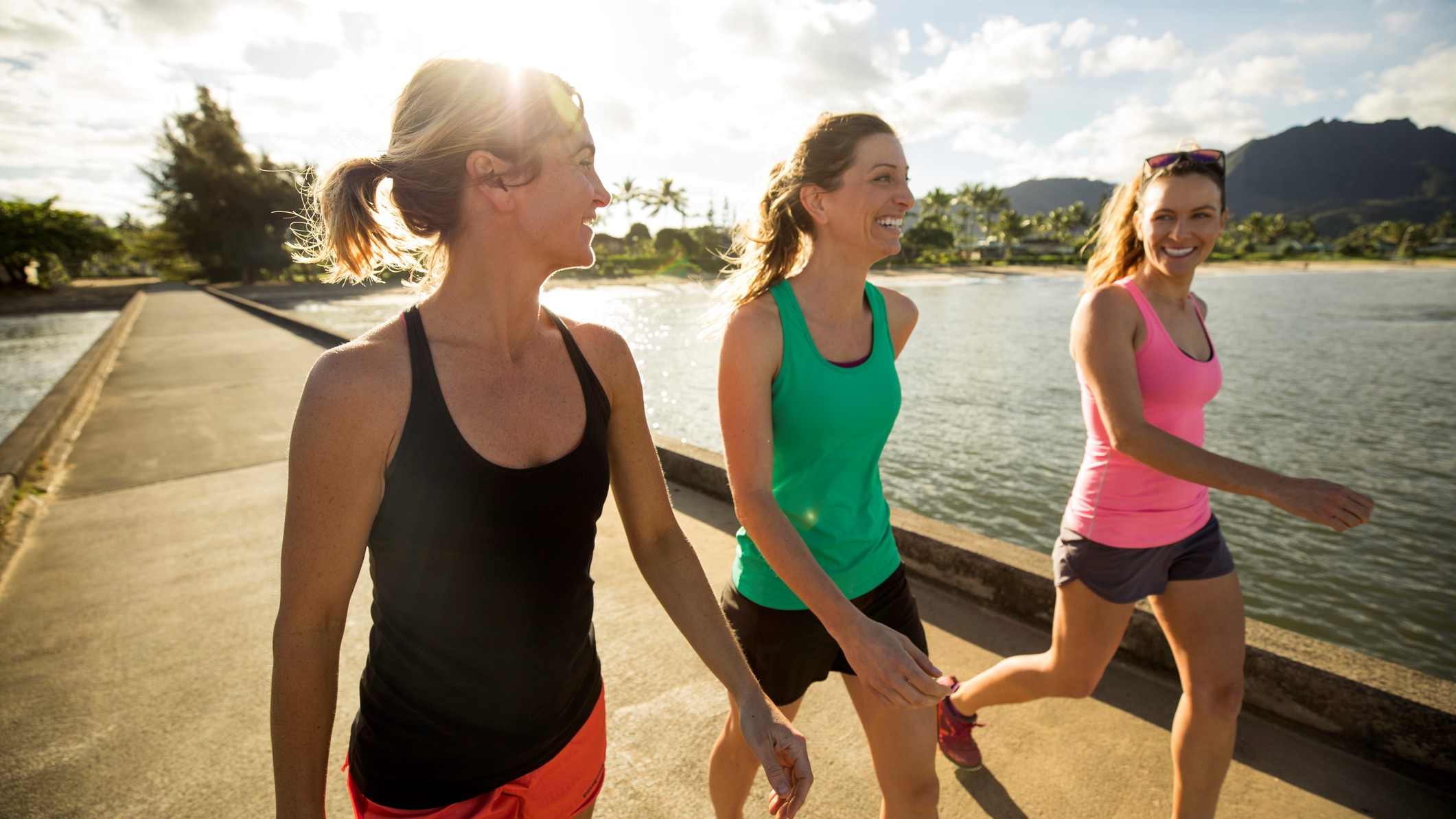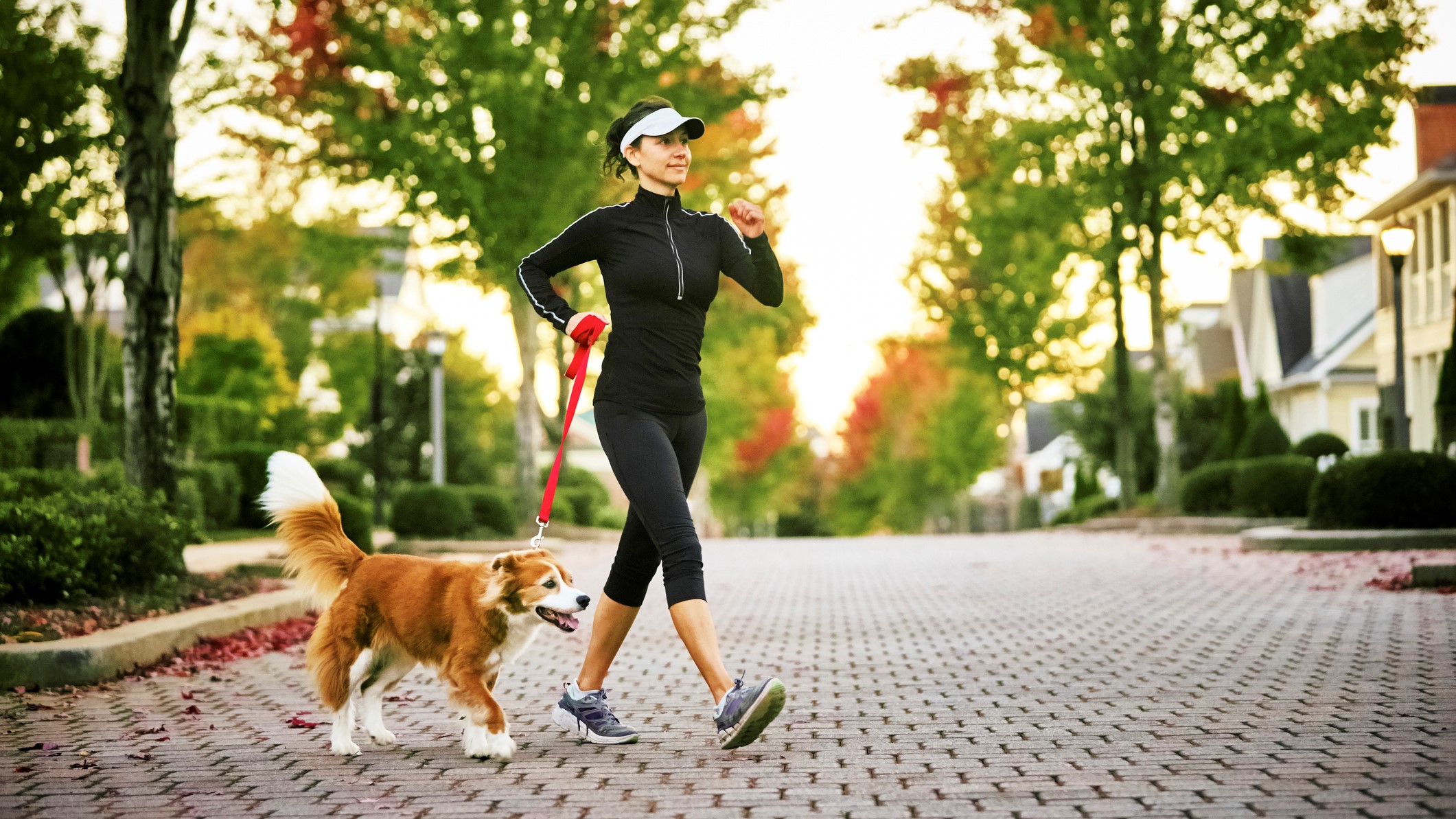Forget 10,000 steps — study reveals the real number of minimum daily steps you should take, according to your age

Lately, more and more people are becoming aware that 10,000 steps is no longer the gold standard — it was actually a very successful and slightly misleading marketing campaign that gathered a lot of momentum fast and had people checking the best fitness trackers regularly during walks.
While some research has suggested that 7,000 steps is enough to keep you happy and healthy, a meta-analysis from 2022 published in The Lancet found you can still achieve health benefits for less, and age could determine how many steps per day you need.
Here’s everything you need to know.
What is the study?

The meta-analysis assessed 15 studies — seven published and eight unpublished — and found that more steps were associated with lower mortality risk; the results plateaued at between 6,000-8,000 for adults aged 60 and over.
For younger adults aged below 60, results plateaued at 8,000 to 10,000. In this study, researchers found “inconsistent evidence” that step intensity was associated with mortality beyond step volume. This suggests a “curvilinear association and range” in daily steps and all-cause mortality.
That said, another study published in BMJ found that your cadence can matter — a pace of 100 steps per minute could be classified as moderate-intensity exercise and boost your cardiovascular fitness.
But while we can clearly see there’s a range you should aim for, according to your age, is there a minimum?
Get instant access to breaking news, the hottest reviews, great deals and helpful tips.
A 2023 meta-analysis suggests there is: 2337 for cardiovascular mortality and 3867 for all-cause mortality. The study, published in the European Journal of Preventive Cardiology, assessed over 226,000 participants to determine the minimum figure we should be aiming to reach each day.
In short, anything fewer than roughly 2,300 per day could increase your risk of cardiovascular events such as stroke or heart disease. And as your step count increases, your risk could decrease over time.
Should you increase your step count?

If you find you’re short on time, walking workouts can help you reach the minimum number of steps. It’s also worth learning about a process called NEAT, which stands for “Non-Exercise Activity Thermogenesis,” and basically accounts for all activity and energy expenditure you can achieve outside of eating, sleeping and dedicated workouts.
Think of playing with your kids, carrying groceries, or using one of the best standing desks during your workday.
The same 2023 meta-analysis found that increasing your step count could lead to better health. A 1,000-step increment decreased the risk of all-cause mortality by 15%, while a 500-step increment decreased the cardiovascular risk of mortality by 7%.
Remember, though, the universal exercise guidelines currently recommend a minimum of 150 minutes of aerobic activity per week.
Walking, particularly in nature, has been associated with boosted mood and creativity, reduced anxiety and fewer feelings of depression. And as we know, walking counts toward aerobic activity.
Activities such as color walking and intuitive walking can also boost your step count without feeling like a workout, so I recommend giving these a try if you’re short on steps for your age range.
Your daily step count doesn’t need to be achieved all in one go, so if you consider a 5k walk might take you over one hour (and roughly 6,000-7,500 steps), then you could break this up into manageable chunks during your day. My colleague swears by exercise snacking for this reason.
More from Tom's Guide
- Surprise! New study reveals that the size of this finger can predict your endurance
- Over 60? Forget running and swimming — these 5 bodyweight exercises help strengthen your entire body, using just a chair
- Want to get fitter and stronger? Researchers say workouts should match your personality type

Sam Hopes is a level 3 qualified trainer, a level 2 Reiki practitioner and fitness editor at Tom's Guide. She is also currently undertaking her Yoga For Athletes training course.
Sam has written for various fitness brands and websites over the years and has experience across brands at Future, such as Live Science, Fit&Well, Coach, and T3.
Having coached at fitness studios like F45 and Virgin Active and personal trained, Sam now primarily teaches outdoor bootcamps, bodyweight, calisthenics and kettlebells.
She also coaches mobility and flexibility classes several times a week and believes that true strength comes from a holistic approach to training your body.
Sam has completed two mixed doubles Hyrox competitions in London and the Netherlands and finished her first doubles attempt in 1:11.
You must confirm your public display name before commenting
Please logout and then login again, you will then be prompted to enter your display name.
